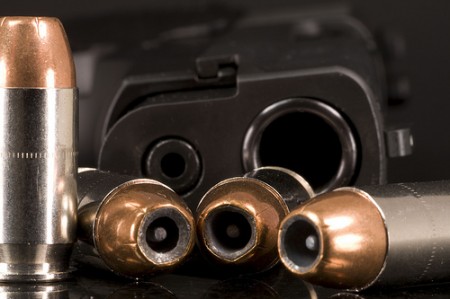
While the political mayhem befalling Libya, Mali, and Syria, has been victim to some media sensationalism, the uproar has also shed light on a growing concern over escalating illicit arms trafficking, a generally accepted cause in the senseless killing of thousands. The long-lasting issue has again become a focal point of an international community relentlessly attempting to find new ways to contain it. Discussions have opened another “Pandora’s Box.” The challenge is drowned in the magnitude and complexity of the problem. Licit and illicit arms trade is lucrative, reaching far over $60 billion. A bewildering array of weapons change hands each year. The small arms trade market alone is estimated at $8.5 billion, with illegal sales raising the total by a staggering $2 billion. Direct consequences are alarming. According to UNDP Assistant Administrator Joseph Ryan “more than half a million people die every year as a result of armed violence” and as many as 2,000 people die each day in conflicts fueled by illegally traded arms.
Attempts to Address the Longstanding Issue
The introduction of the U.N. “Programme of Action” (PoA), which sets measures at the national and international level, is one of the primary initiatives intended to counter illicit trafficking. Outcomes have shown sluggish progress. The problem cannot be targeted without concurrently tackling the effects licit arms trade has on introducing security threats. Instances in which weapons end up being either stolen, lost, or introduced in countries subject to embargoes are countless.
This summer, 173 U.N. member states gathered to reach a consensus on the much anticipated first international legal instrument: the U.N. Arms Trade Treaty (ATT). The objective was clear: Impose tighter regulations on arms brokers and prohibit states from transferring conventional weapons in embargoed countries. After a four-week effort, opposition from three major exporters—the United States, Russia, and China—brought these containment efforts to a standstill. As UN Secretary-General Ban Ki-moon conceded, “it is a disappointment.”
Arms are still the tools of choice for criminal violence. Restraining arms trade would certainly mean less revenue for many countries. Protagonists must continue the fight. Media outlets swiftly announced deadlock and cast skepticism, but recent positive reviews of the PoA could be an impetus for the ATT to be ratified in the near future.
Are Current Efforts Enough?
Though the latest initiative is commendable, existing national and international efforts have experienced mixed results, not to mention some laxity in enforcing arms embargos and sanctioning regimes. The treaty will never stop violations of human rights or armed conflicts. This is still an opportunity for countries to show good faith in promoting international security and peace and can be instrumental in providing much-needed assistance to countries lacking adequate governance or security.
Lessons learned from other treaties, specifically treaties for the non-proliferation of nuclear weapons, are a reminder of possible shortcomings including defiance or unwillingness to abide by the law. Advancing the sovereignty argument has demonstrated to be counter-productive, since the treaty is not undermining it but rather providing direction commonly accepted by member states for better governance.
There is little to control the end use of weapons other than the domestic wherewithal for containment of trafficking. Some countries beset by political oppression, insurgency, or armed conflict reveal a myriad of weaknesses. Lack of border control, license production, weak control of ownership, corruption, and inadequate legal institutions and resources are paramount among them. These countries have become a panacea for criminals, terrorists, and insurgent groups or questionable brokers. The example of Libya is blatant, where the lack of governance made the outpouring of an existing and supplied arsenal of weapons into the surrounding region possible.
A Call for Action
While the purpose of promoting security and peace, and preventing humanitarian violations, have become a universal concept, the prevention and interdiction of illicit trade in conventional arms and illegal end use is essential. The ATT along with the PoA are critical steps in combating these predicaments. More engagement from the governments of affected nations is needed to expedite the process. Strengthening infrastructures to deter illegal usage should start domestically with enhanced exportation and importation controls more difficult to circumvent. Any production surplus and weapons supply storage must be secured to avoid theft or loss. A mitigation plan as part of post-conflict efforts is needed to control arms proliferation and secure the peace.
Better governance, information transparency, and a resolve to combat corruption should not be options but requirements. From an international standpoint, U.N. member states should adopt an assistance mechanism for training and resources beyond existing bilateral or multi-lateral agreements for countries in dearth of these capabilities. The U.N. as a regulator must reinforce its sanctioning of regimes and rightly enforce its embargoes.
The arms trade controversy is far from over.
Anne-Yolande Bilala is currently working in the aerospace and defense industry and pursuing her masters of law in International Security and Defense at the Université Pierre Mendes France-Grenoble II. This article was originally published with ISN partner, Diplomatic Courier.
For additional reading on this topic please see:
Arms Trade Treaty (ATT) Negotiations
Assessing Transparency in Small Arms Exports
Politics of Arms Trade Treaty Negotiations
For more information on issues and events that shape our world please visit the ISN’s featured editorial content and the ISN Blog.


One reply on “The UN Arms Trade Treaty: an Inadequate Solution for Illicit Weapons Trafficking?”
Despite the headline, this blog post appears to support the push for an ATT. I agree with this sentiment. While an ATT would not prevent all irresponsible and/or illicit transfers, it has the potential to raise the cost of conducting such transfers. Any opportunity to move the needle away from the trafficking of weapons to human rights violators, criminals and terrorists is one that should be taken.